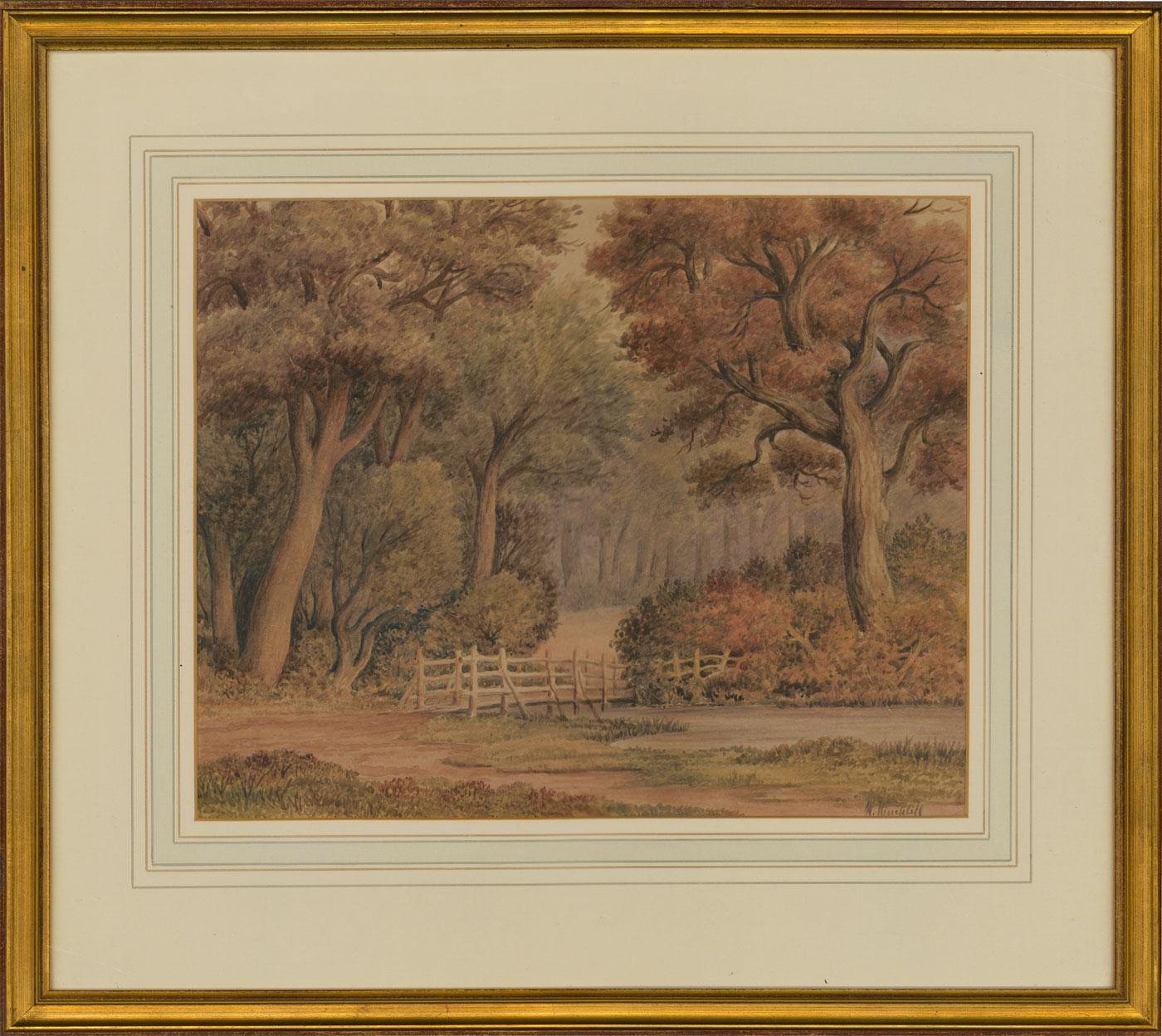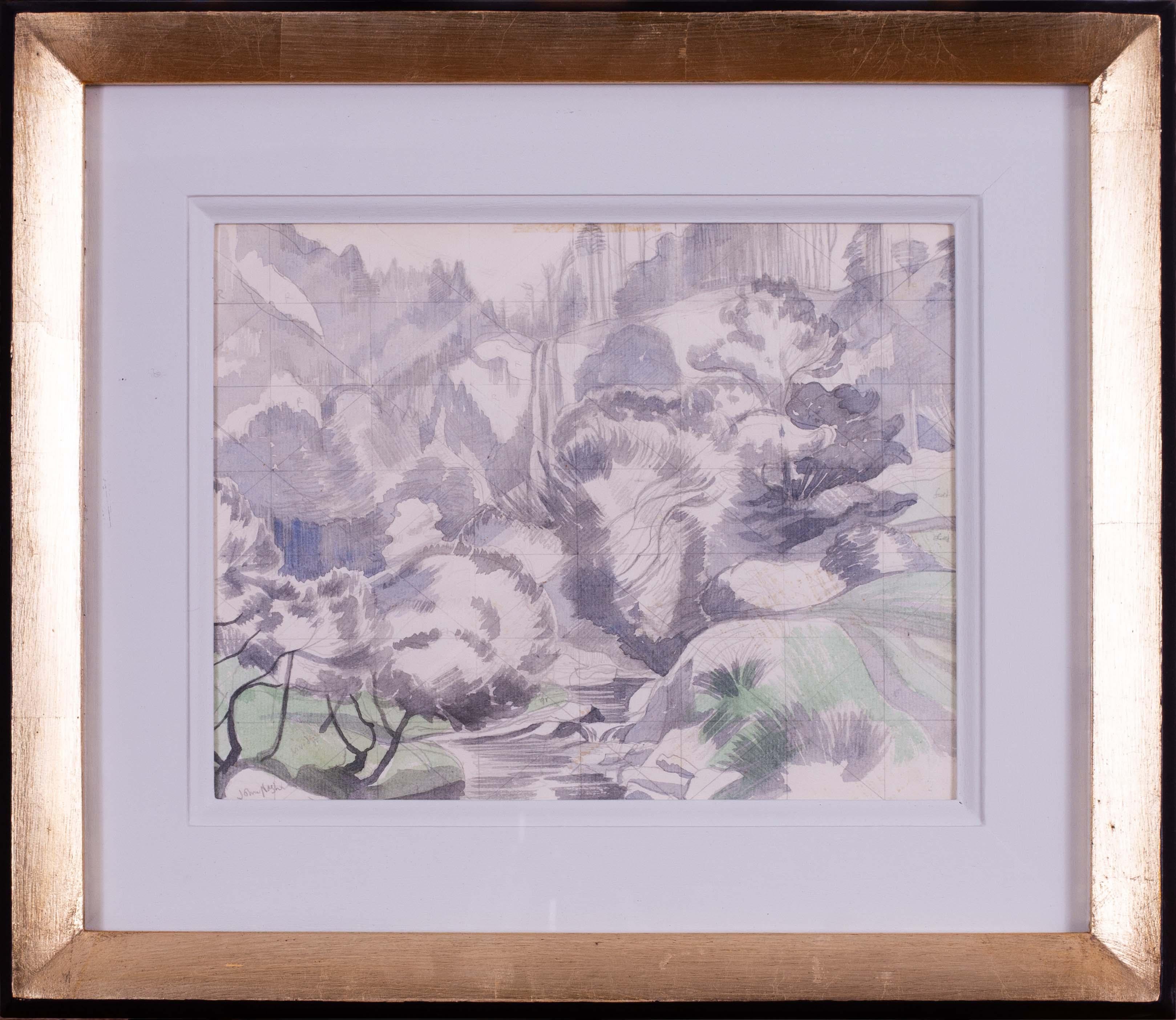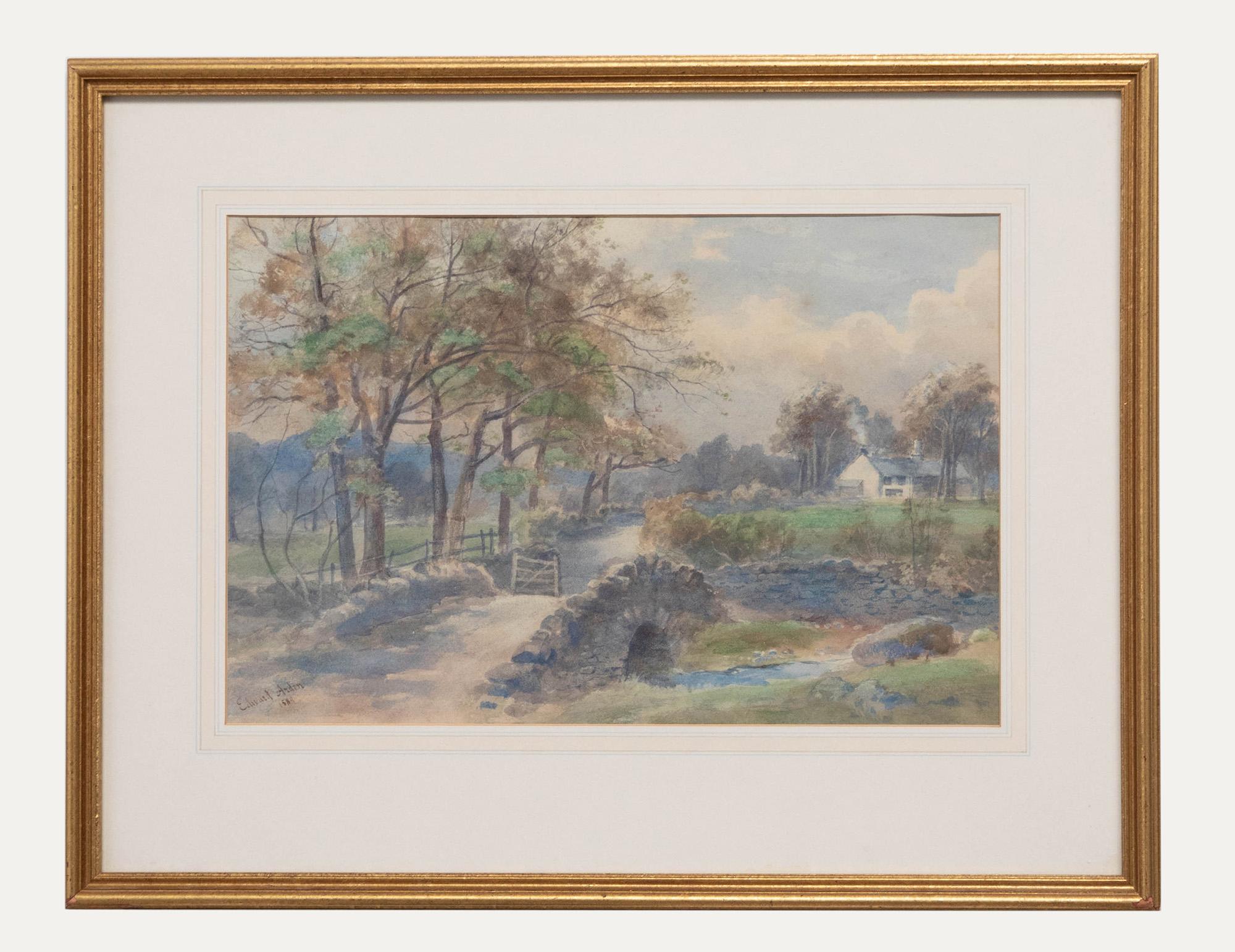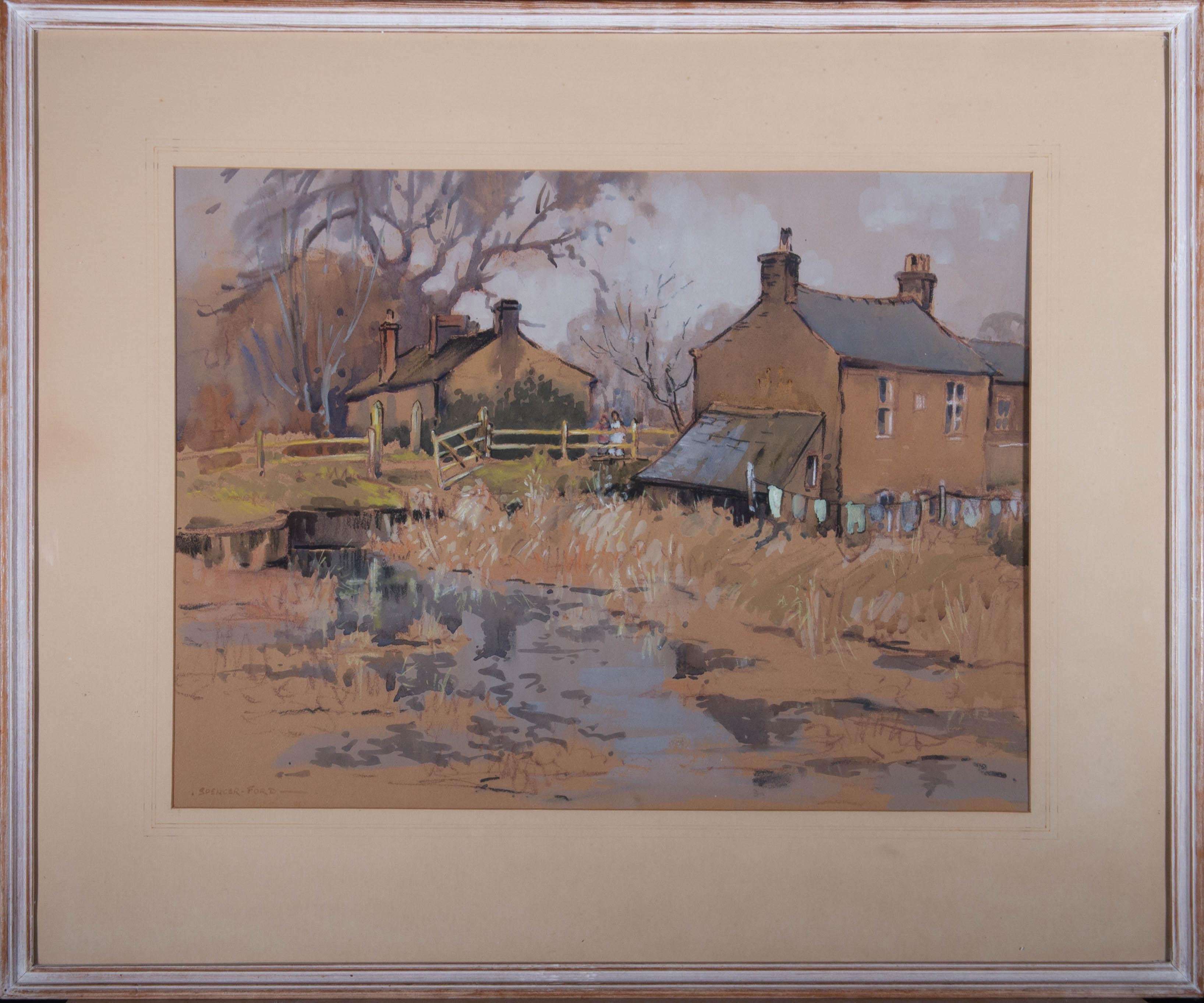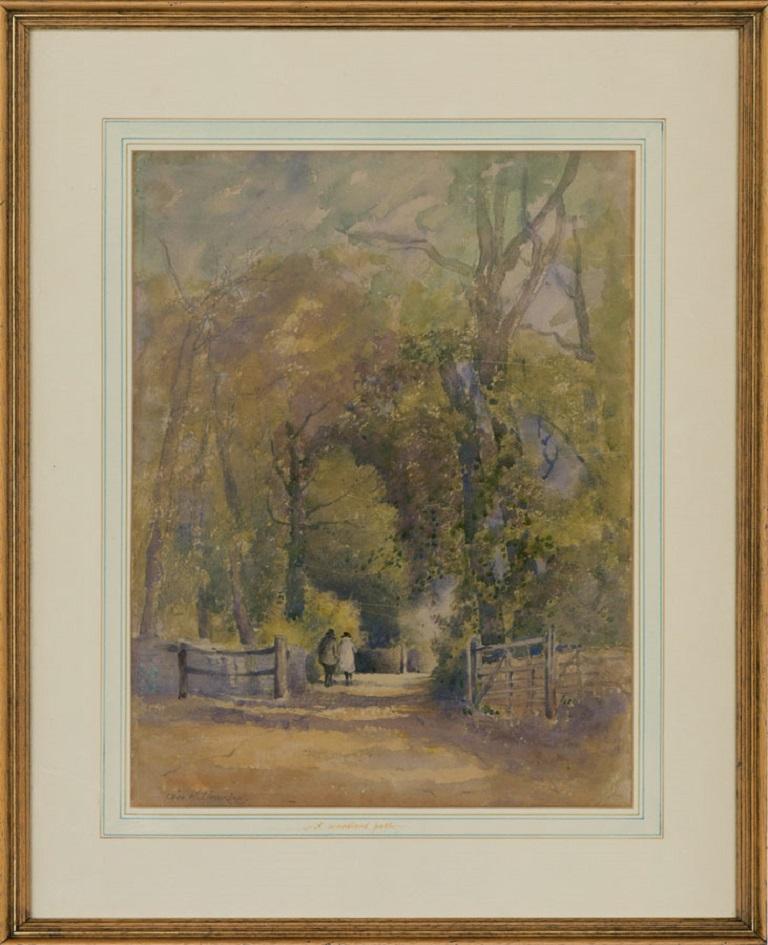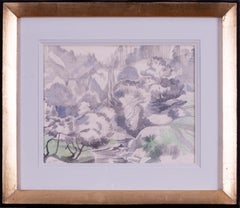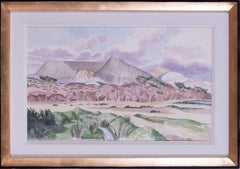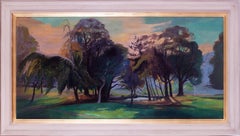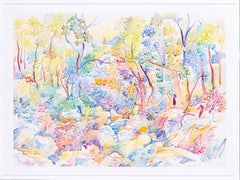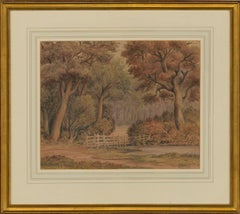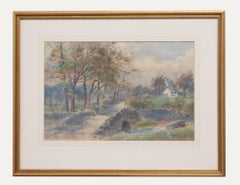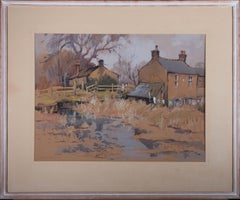Items Similar to The Woodland Stream by British artist Charles Frederick Tunnicliffe, 1980
Want more images or videos?
Request additional images or videos from the seller
1 of 11
Charles Frederick TunnicliffeThe Woodland Stream by British artist Charles Frederick Tunnicliffe, 19801980
1980
$620.85
£450
€530.86
CA$853.97
A$949.24
CHF 497.57
MX$11,592.46
NOK 6,211.86
SEK 5,844.20
DKK 3,962.15
About the Item
Charles Frederick Tunnicliffe (British, 1901-1979)
The Woodland Stream
Bears studio stamp `1980’387/24’ (under mount)
Pencil and coloured chalks
10.1/2 x 15 in. (26.7 x 38 cm.)
- Creator:Charles Frederick Tunnicliffe (1901 - 1979, British)
- Creation Year:1980
- Dimensions:Height: 10.5 in (26.67 cm)Width: 15 in (38.1 cm)Depth: 1 in (2.54 cm)
- Medium:
- Period:
- Condition:Missing fragment to lower right corner, in overall good order otherwise, behind glass in a washlined mount and simple black frame.
- Gallery Location:Petworth, GB
- Reference Number:1stDibs: LU540312098912
About the Seller
4.9
Platinum Seller
Premium sellers with a 4.7+ rating and 24-hour response times
Established in 2010
1stDibs seller since 2017
272 sales on 1stDibs
Typical response time: 2 hours
- ShippingRetrieving quote...Shipping from: Petworth, United Kingdom
- Return Policy
Authenticity Guarantee
In the unlikely event there’s an issue with an item’s authenticity, contact us within 1 year for a full refund. DetailsMoney-Back Guarantee
If your item is not as described, is damaged in transit, or does not arrive, contact us within 7 days for a full refund. Details24-Hour Cancellation
You have a 24-hour grace period in which to reconsider your purchase, with no questions asked.Vetted Professional Sellers
Our world-class sellers must adhere to strict standards for service and quality, maintaining the integrity of our listings.Price-Match Guarantee
If you find that a seller listed the same item for a lower price elsewhere, we’ll match it.Trusted Global Delivery
Our best-in-class carrier network provides specialized shipping options worldwide, including custom delivery.More From This Seller
View AllJohn Northcote Nash watercolour of The Falls near Denbigh, North Wales
Located in Petworth, West Sussex
John Northcote Nash CBE RA (British, 1893–1977)
The Falls near Denbigh
Pencil and watercolour with squaring
Signed lower left: John Nash
8.375 x 10.875 in. (21.5 x 27.5 cm)
A finely...
Category
20th Century Modern Landscape Drawings and Watercolors
Materials
Watercolor, Pencil
1971 John Northcote Nash watercolour of China Clay Dumps in St. Austell Cornwall
Located in Petworth, West Sussex
John Northcote Nash CBE RA (British, 1893–1977)
China Clay Dumps, St. Austell, 1971
Pencil on watercolour
Signed and dated lower left: John Nash 1971
13.25 x 22 in. (33.7 x 55.8 cm)
...
Category
20th Century Modern Landscape Drawings and Watercolors
Materials
Watercolor, Pencil
Woodland pond landscape painting by female 20th C artist Phyllis Bray
Located in Petworth, West Sussex
A really luscious and colourful woodland landscape oil painting by Modern British female artist Phyllis Bray, 1930s.
Phyllis Bray (30 August 1911 – 1991)...
Category
20th Century Modern Landscape Paintings
Materials
Canvas, Oil
Large landscape watercolour by Cornish artist Fred Yates of La Riviere Lafare
By Fred Yates
Located in Petworth, West Sussex
A beautiful and serene watercolour painting by Cornish artist Fred Yates. This large example of his work highlights his ability to balance colour and light in an expressive manner. ...
Category
21st Century and Contemporary Expressionist Landscape Paintings
Materials
Watercolor
19th Century French woodland scene with girl by a stream by Rerolle
Located in Petworth, West Sussex
Joseph Rerolle (French, 1829 – 1901)
A girl at a woodland stream, Leman
Oil on paper laid down on board
Signed ‘J. Rerolle’ (lower left)
13.7/8 x 16.3/4 in. (35.3 x 42.5 cm.)
Category
19th Century Impressionist Figurative Paintings
Materials
Paper, Oil, Board
Lakeside landscape by British female mid 20th Century artist Phyllis Bray
Located in Petworth, West Sussex
A really beautiful and large example of British 1930s painting by female artist Phyllis Bray. Bray was a British artist and illustrator known for her inv...
Category
20th Century Modern Landscape Paintings
Materials
Canvas, Oil
You May Also Like
W. Hinchcliff - Late 19th Century Watercolour, Forest Scene with a Pond
Located in Corsham, GB
A fine and carefully detailed landscape view of a forest, with a small pond and a wooden bridge leading down a wooded path, by the artist W. Hinchliff. The artist has added texture t...
Category
19th Century Landscape Drawings and Watercolors
Materials
Watercolor
$292 Sale Price
20% Off
C.L. Windsor - Signed & Framed Early 20th Century Watercolour, Woodland Stream
Located in Corsham, GB
Soft brush strokes and a cool palette are used harmoniously in this fine study of a quiet woodland stream. The artwork is signed in the bottom left-hand corner and is well presented ...
Category
20th Century Landscape Drawings and Watercolors
Materials
Watercolor
Edward Tucker Jnr (1847-1910) - Framed Watercolour, Lake District Stream
Located in Corsham, GB
An original watercolour by Edward Tucker Jnr (1847-1910). Lake District stream with stone bridge crossing. Well presented in a wash-line mount and gilt-effect frame. Signed and dated...
Category
Late 19th Century Landscape Drawings and Watercolors
Materials
Watercolor
R.F. Spencer-Ford (1902-1990) - 20th Century Gouache, Cottages by a Stream
Located in Corsham, GB
A charming gouache painting with charcoal, watercolour and pastel, by the artist Roland F. Spencer-Ford. The scene depicts a landscape view with cottages by a stream in Shropshire. S...
Category
21st Century and Contemporary Landscape Drawings and Watercolors
Materials
Gouache
George Henry Downing (1878-1940) - Early 20th Century Watercolour, Woodland Path
By Dudley Burnside
Located in Corsham, GB
A delightful landscape from English artist George Henry Downing (1878-1940). Here Downing has depicted an autumnal woodland, with two figures walking away from the viewer. Downing's ...
Category
20th Century Landscape Drawings and Watercolors
Materials
Watercolor
Early 19th Century English watercolour of woodland near Croxdale Hall
Located in Harkstead, GB
A very attractive and meticulously executed view of a rocky landscape within the woods dating to 1823. This would suit a library or study with its muted tones and skifull draughtsmanship.
William Nicholson (1781-1844)
Near Croxdale Hall
Signed with initials and inscribed with title and date 1823
Pen, ink and grey wash
11 x 8 inches, image only
17 x 13 inches without frame
The portrait-painter and etcher William Nicholson was born in Ovingham-on-Tyne, Northumberland, on Christmas Day 1781. His family transferred to Newcastle when his father was appointed Headmaster of the city's Grammar School. At an early age, though, Nicholson appears to have moved to Hull where he made his artistic debut, painting miniatures of officers garrisoned there. He was almost entirely self-taught, learning his craft through the close study of artworks in private and public galleries. He subsequently returned to Newcastle where he received many commissions to paint portraits of the old families of Northumberland. In 1808, he began to exhibit at the Royal Academy, continuing to do so until 1822. By 1814, Nicholson, whose mother was a Scot, had moved to Edinburgh where he set up as a miniaturist and painter in oils. Soon, however, he began to specialize in watercolour portraits. Early subjects included the actor Daniel Terry and the poet and novelist James Hogg. In 1818 he began to publish a series of Portraits of Eminent Scotsmen, etched from his own portraits and those of other painters. Besides Scott and Hogg, the subjects included the writers Robert Burns, John Wilson ('Christopher North'), and Lord Jeffrey, the painters Sir Henry Raeburn, the divines Alexander Carlyle and Alexander Cameron, the engineer James Watt, the architect John Playfair, and the song-collector and composer George Thomson...
Category
Early 19th Century Academic Landscape Drawings and Watercolors
Materials
Paper, Watercolor, Ink, Pen
